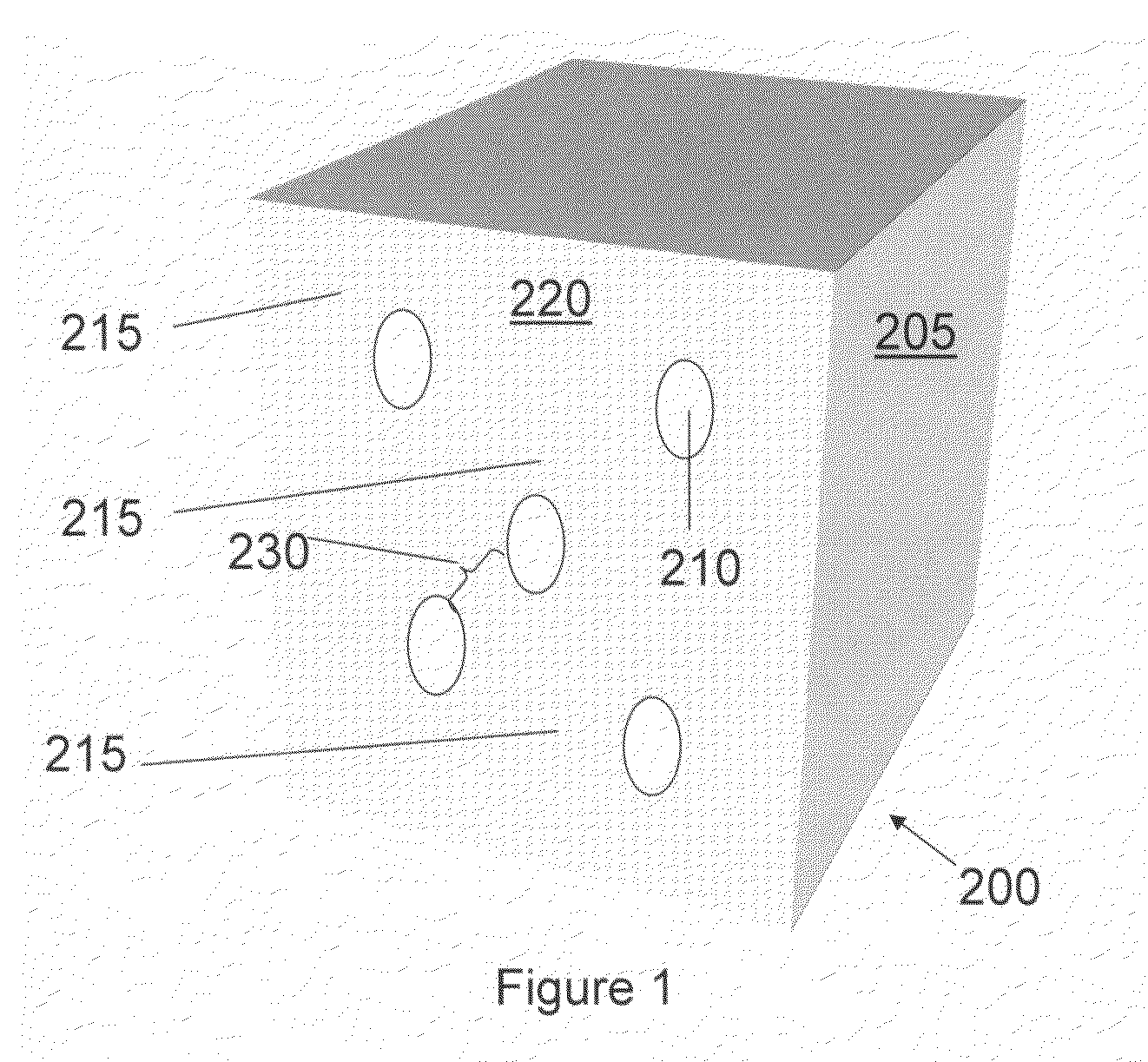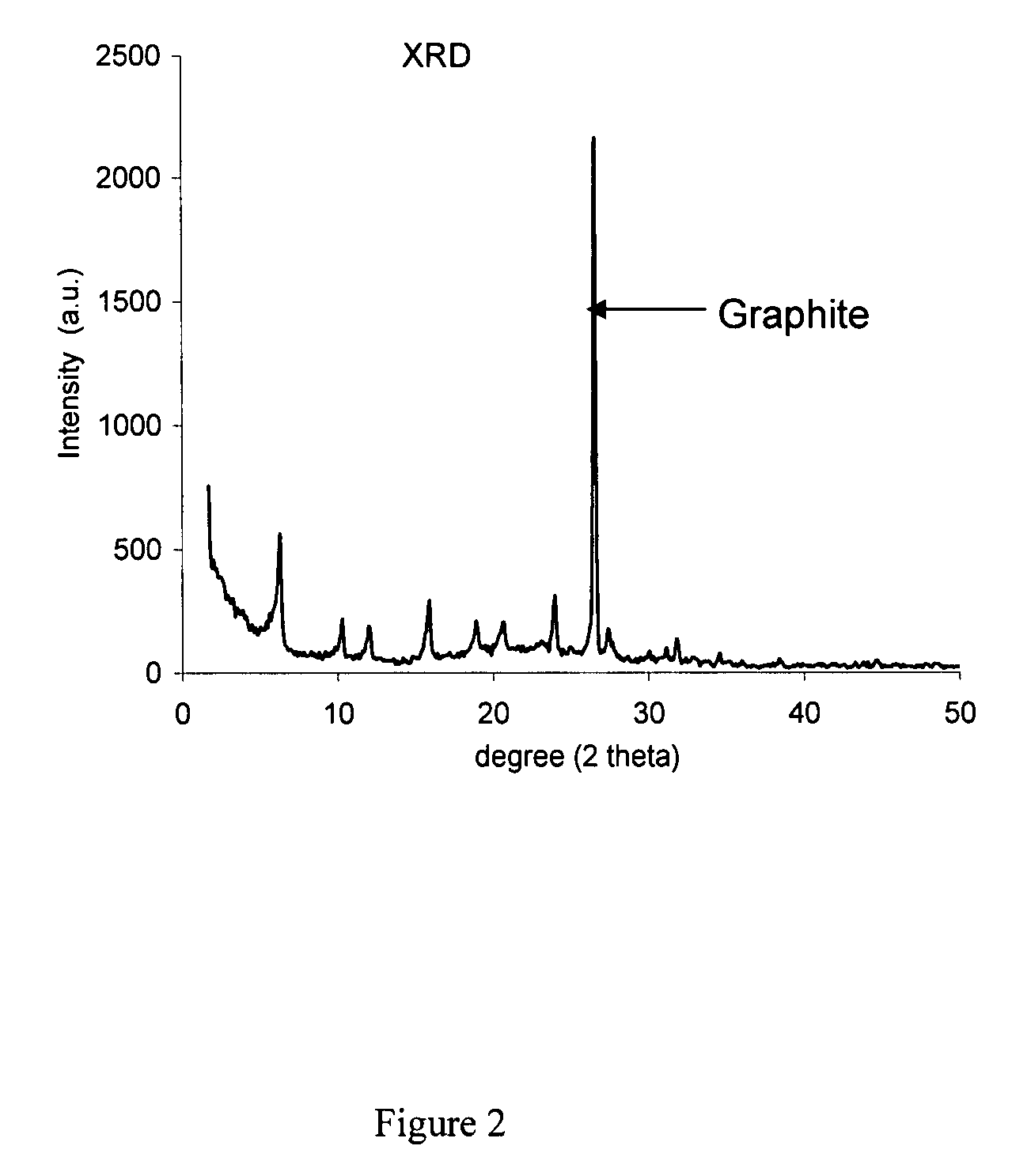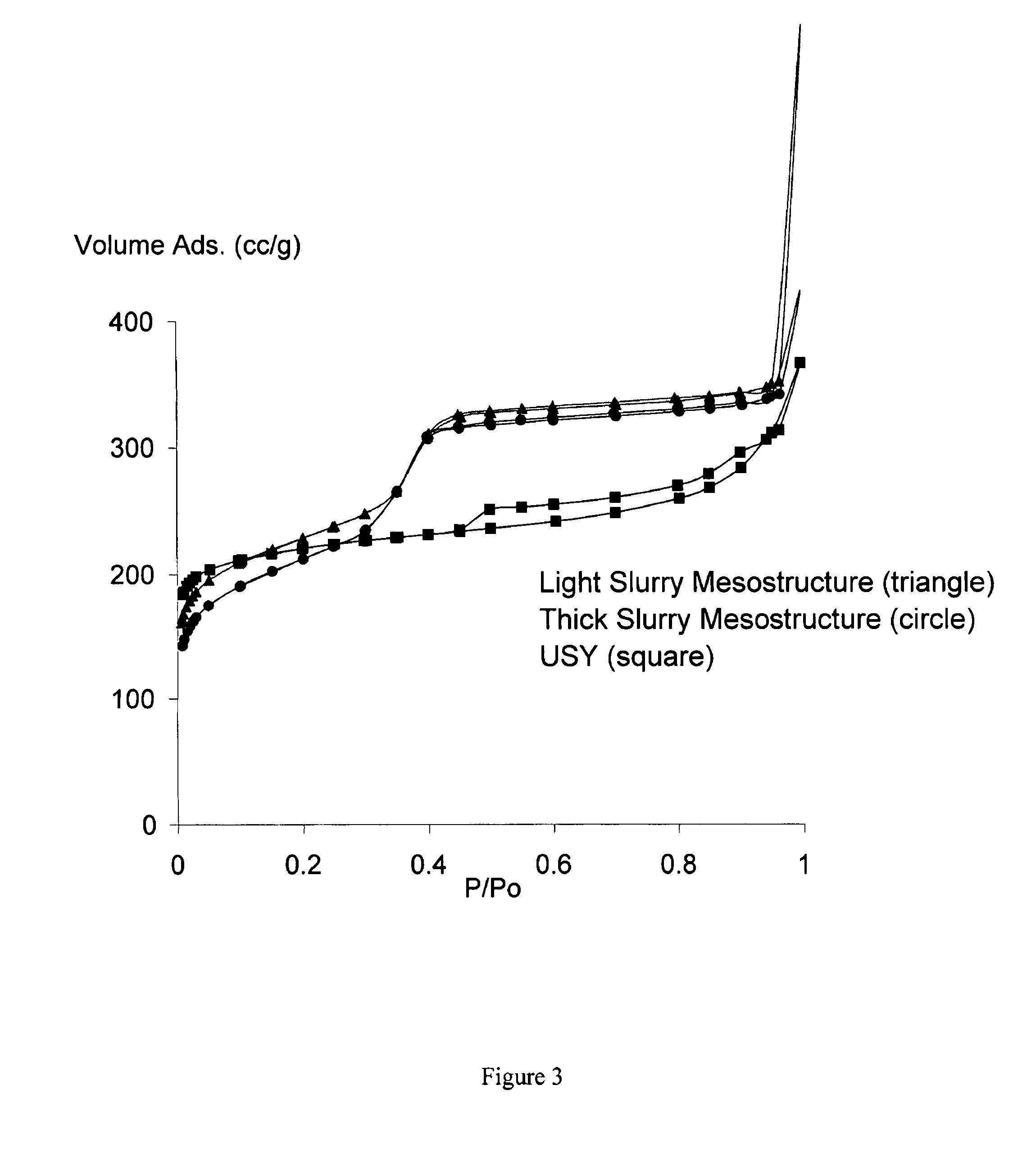Methods for making mesostructured zeolitic materials
a technology of zeolitic materials and mesostructures, which is applied in the direction of catalyst activation/preparation, silicon compounds, physical/chemical process catalysts, etc., can solve the problems of limited scale up of commercial production of mesostructures, limited scale up of mass production of methods that suspend zeolite in a quantity of solution, and limited capacity of equipment (e.g., processing vessels) to produce mesostructures for commercial production (i.e., mass production
- Summary
- Abstract
- Description
- Claims
- Application Information
AI Technical Summary
Benefits of technology
Problems solved by technology
Method used
Image
Examples
example 1
[0062]Example 1 compares Sample 1, a mesostructure made under dilute conditions (i.e., light slurry conditions) with Sample 2, a mesostructure made under concentrated conditions (i.e., thick slurry conditions) Both Sample 1 and Sample 2 have substantially the same mesopore volume and have controlled mesoporosity.
[0063]Sample 1 has dilute conditions (i.e., light slurry conditions): 1 gram of NaOH was dissolved in 480 ml of water then 18.4 g of hexadeciltrimethylammonium bromide was substantially dissolved in the water until a clear solution was obtained. The solution was added to 16 g of USY zeolite having long-range crystallinity (CBV720 from Zeolyst Inc.) to form a suspension. The suspension was hydrothermally treated at 125° C. for 26 hours to define in the USY a plurality of mesopores having a controlled cross sectional area to form a mesostructure having long-range crystallinity. The mesostructure was filtered out then washed and dried. Finally, the mesostructure was calcined at...
example 2
[0066]Sample 3 has dilute conditions (i.e., light slurry conditions): 1.92 gram of NaOH was dissolved in 480 ml of water then 18 g of hexadeciltrimethylammonium bromide was substantially dissolved in the water until a clear solution was obtained. The solution was added to 16 g of USY zeolite having long-range crystallinity (CBV720 from Zeolyst Inc.) to form a suspension. The suspension was hydrothermally treated at 150° C. for 24 hours to define in the zeolite USY a plurality of mesopores having a controlled cross sectional area to form a mesostructure having long-range crystallinity. The mesostructure was filtered out, washed and dried. Finally, the sample was calcined at 550° C. in nitrogen for 4 hours (ramp rate 5° C. / min), and switched at 550° C. to synthetic air for 8 hours. In Sample 3 the light slurry conditions have a ratio of milliliters of solution to grams of inorganic material having long-range crystallinity to be transformed (i.e., the USY zeolite) equal to 30 ml / g.
[006...
example 3
[0074]Zeolites are frequently employed as fluid catalytic cracking (FCC) catalysts. FCC is a moving fluidized process in which a vaporized feed is cracked over zeolite catalyst at temperatures from between about 470° C. to about 540° C., for example. The cracking activity continuously deposits coke, a deactivating carbon, over the zeolite. Generally, coke is removed when it is burned off of the zeolite in a regeneration step that exposes the coke deposited zeolite to a temperature range of from about 700° C. to about 950° C. in a steam environment.
[0075]In order for a zeolite to provide catalytic cracking capacity after a regeneration step, the zeolite must be hydrothermally stable. A hydrothermally stable zeolite has substantially the same properties both prior to and after exposure to steam at a selected temperature. For example, a hydrothermally stable zeolite has substantially the same catalytic activity (e.g., provides substantially similar conversion) after a regeneration cycl...
PUM
| Property | Measurement | Unit |
|---|---|---|
| diameter | aaaaa | aaaaa |
| thickness | aaaaa | aaaaa |
| temperature | aaaaa | aaaaa |
Abstract
Description
Claims
Application Information
 Login to View More
Login to View More - R&D
- Intellectual Property
- Life Sciences
- Materials
- Tech Scout
- Unparalleled Data Quality
- Higher Quality Content
- 60% Fewer Hallucinations
Browse by: Latest US Patents, China's latest patents, Technical Efficacy Thesaurus, Application Domain, Technology Topic, Popular Technical Reports.
© 2025 PatSnap. All rights reserved.Legal|Privacy policy|Modern Slavery Act Transparency Statement|Sitemap|About US| Contact US: help@patsnap.com



